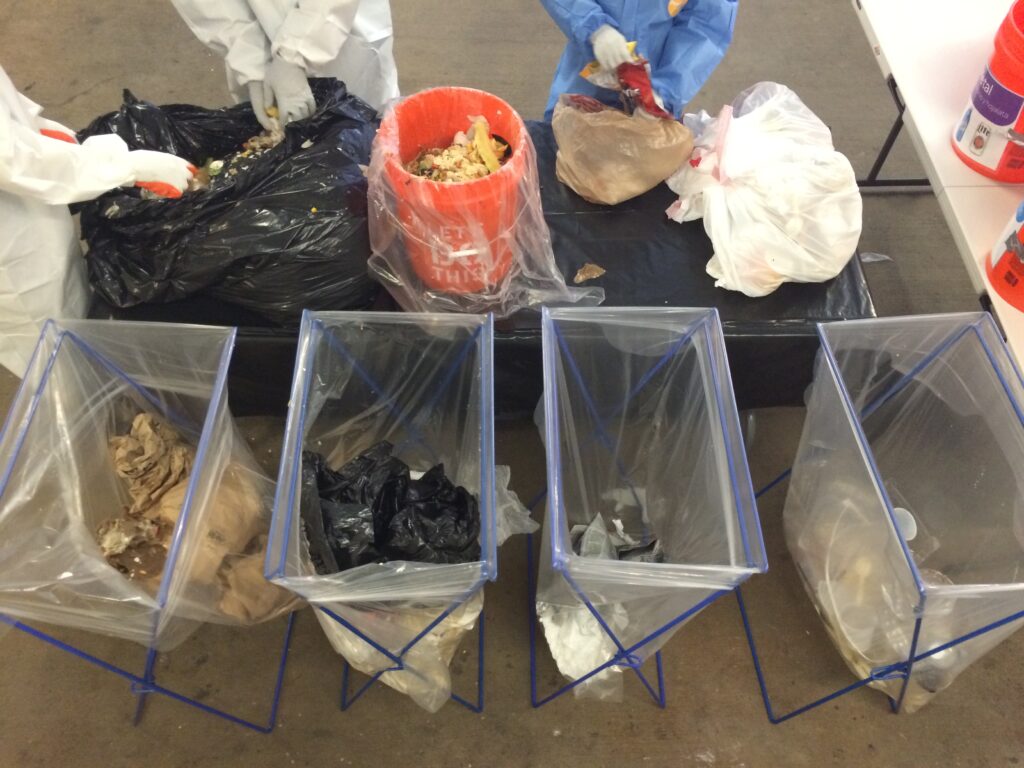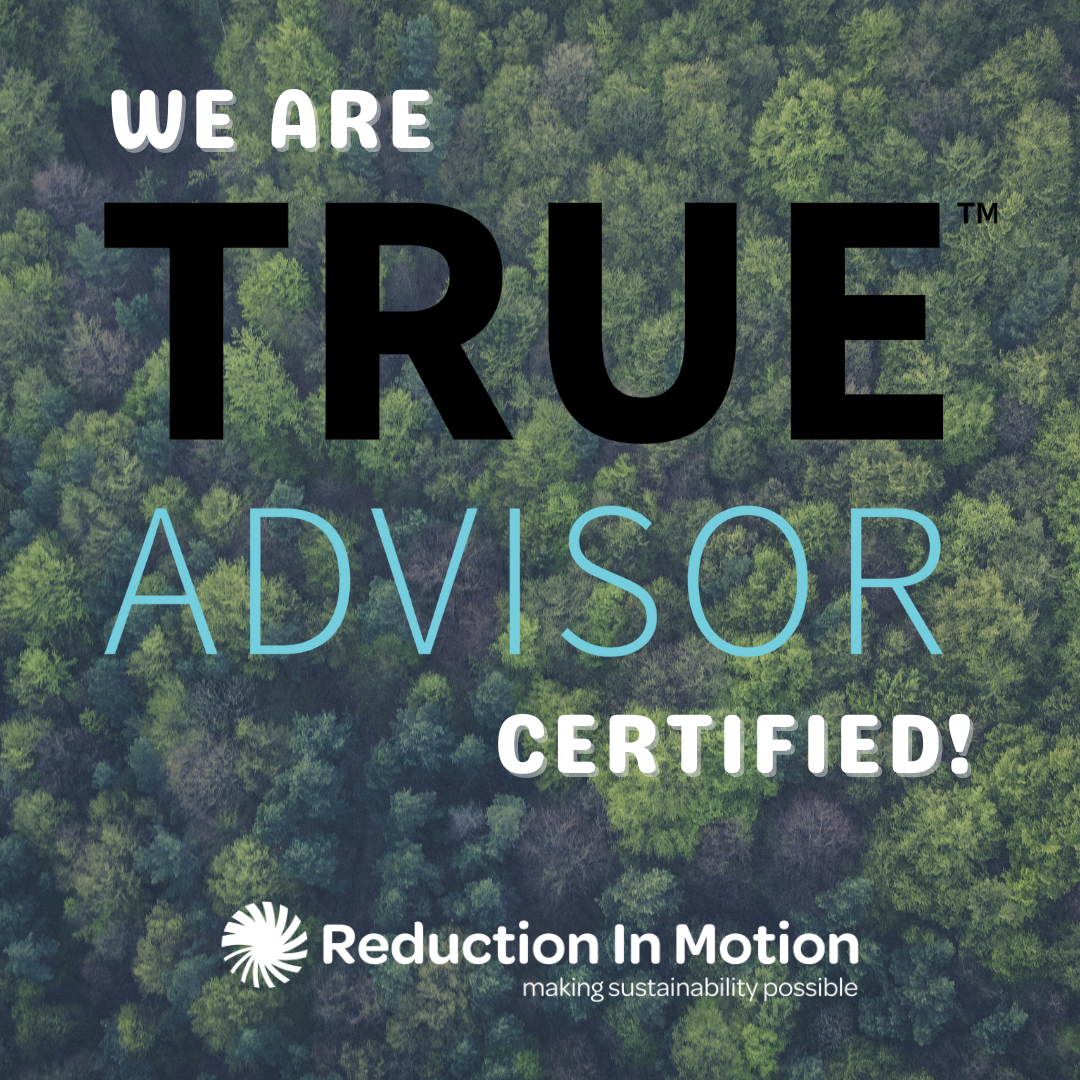Waste Audit – Getting Started
A waste audit is an examination of how waste is currently disposed to determine opportunities for improving waste reduction and diversion efforts such as recycling, composting, donation, and reuse. There are different waste audit strategies that can be used depending on your goals, operations, and resources.
WASTE AUDIT BENEFITS
- Understand what you throw away
- Identify contamination
- Discover missed recycling opportunities
- Obtain data to support policies, plans, and projects
- Acquire pictures to assist in education and training
- Measure progress towards your waste diversion goals
- Validate information provided by your hauler
- Develop reporting required by a regulator
WASTE AUDIT PLAN
A waste audit should be designed to provide evidence that will help an organization meet its goals but not too singularly focused that it lacks context for making informed decisions.
A waste audit can include weighing and sorting of trash into custom categories or categories set by a certification such as LEED or TRUE. Auditors weigh waste before and after sorting to determine contamination and missed opportunity rates.
A waste audit should include an evaluation of containers, signs, housekeeping procedures, dock operations, and hauling equipment to connect findings within the waste sorting to actionable recommendations for program improvements.
WASTE AUDIT TYPES
Visual Waste Audit
An examination of waste disposal and contents through visual observations. Waste auditors will observe the contents of current waste bins for volume, contamination, and contents. They may pull trash from containers to a sort-area or visually inspect trash within existing containers, but they do not hand sort.
Waste Sort Audit or Waste Composition Study
A traditional waste audit involves the holding of waste over a designated period of time, weighing the waste as generated, hand sorting waste into categories, and then weighing sorted material per category. Waste audit procedures may include identifying where trash was generated within a given building. Categories may be determined using existing recycling programs (ie, single-stream, fiber recycling), material categories (plastic, aluminum, paper), or by categories determined by certifications like TRUE or LEED.
Waste Audit Required for LEED Certification or TRUE Certification
LEED and TRUE certifications have specific guidelines that must be followed for a waste audit to achieve credits. Requirements can include breaking data into unique locations within a building, separating waste into 12 market categories, and sorting at least 24 consecutive hours of waste per sample. Accessing specific guidelines requires a membership or working with a certified advisor. To get more information you can contact us or check out the certification sites here: LEED or TRUE . We recommend working with professionals to conduct these audits since they can be quite complicated.
Waste Program Assessment
A waste program assessment may include auditing but focuses on evaluating an organization’s waste management system including waste composition and flow, policies, procedures, training, equipment, and vendors. Our team conducts assessments using a combination of on-site walk-throughs, interviews, and documentation review. Assessments should be against a set of recognized best practices, strategies, and tactics.
WASTE AUDIT PROCESS AND TIPS
To do a waste audit, start by understanding what questions you want answered. Then follow simple steps to ensure the safety of auditors and accuracy of results. Small sample audits are easiest to weigh, sort, and document, but multiple samples will be needed. If going for certification, make sure to follow the appropriate guidelines to receive credits. Here are some tips to doing an audit, regardless of the type you’re conducting.
- Always wear gloves
- Don’t tell occupants that you’re conducting an audit
- Ensure all desired waste is measured by working with housekeeping
- Designate someone to record data and take pictures who isn’t sorting
- Get approval for a location to sort waste
- Know what you’re sorting and how before you start
- Make sure you have enough help
- Reach out to a professional for support
WASTE AUDIT EXAMPLES
#1 – Waste Sort Audit to Restart Recycling at a College
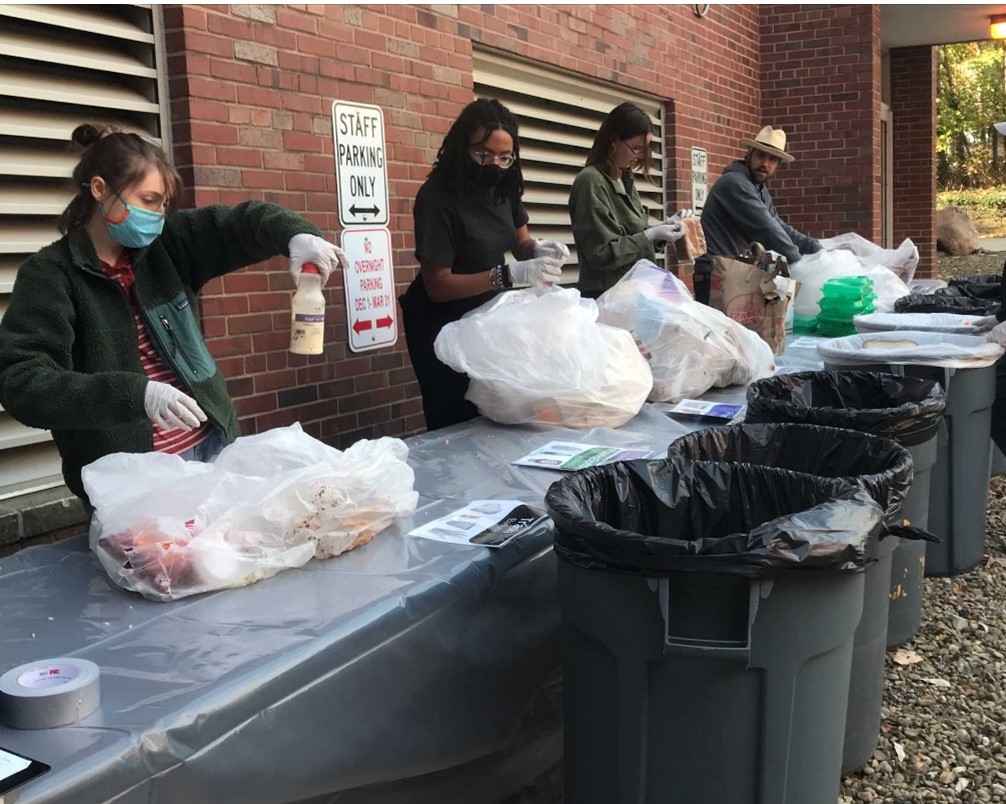
Need
High-levels of contamination are threatening single-stream recycling programs across the country. When a college town decided to terminate commercial recycling and slowly reintroduce it, a college was left needing to develop an action plan to reduce recycling contamination on-campus so it could re-enroll in recycling.
Process
Reduction In Motion conducted an audit for the college that sorted 24-consecutive hours of waste from 6 different buildings representing the different types of buildings on campus. College volunteers were involved in the sorting of more than 1,700 pounds of trash over 2 days.
Results
The audit results showed that there were disproportionate opportunities to recycle and compost in each building type. 48% of all waste sorted could be recycled or composted. This helped the college determine where to start recycling and what materials to target for collection. While their hauler would accept more materials for recycling, they focused on plastic beverage bottles, aluminum cans, copier paper, and boxes. They designed a system for collection that included new waste containers with restrictive openings, color codes, and clear signs.
#2 – Waste Audits to Measure Progress at a School of Medicine
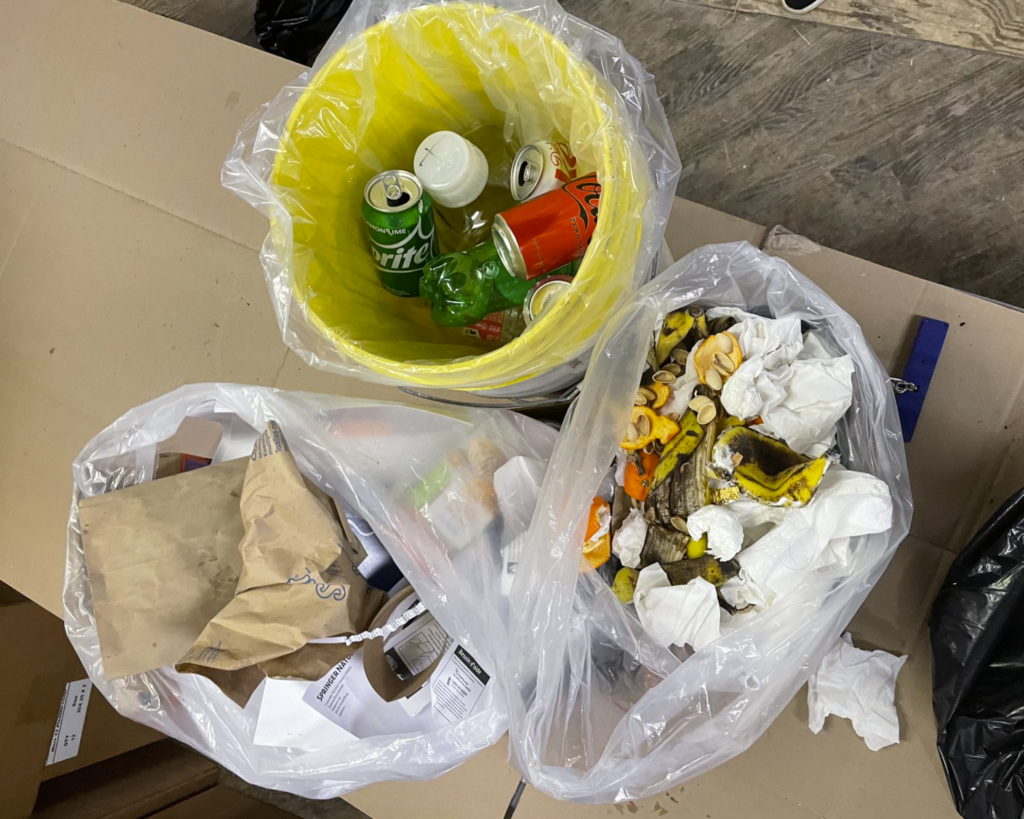
Need
Waste audits are great for conducting a baseline analysis and developing an improvement plan, but they can also be designed to measure ongoing progress. A School of Medicine wants to increase waste diversion but needs more specific data to measure progress and identify improvement opportunities. So, they contracted with us to conduct ongoing audits to measure missed diversion rates within their municipal solid waste stream.
Process
12 separate buildings have been audited in the Fall and Spring for the past twelve years. All landfill waste generated during the day of the audit is weighed, sorted, and documented. Our team works closely with housekeeping to schedule audits while not informing building occupants of the audits to ensure accurate results.
Results
Audit results are used each year to update in-person staff training materials, identify annual projects for an action plan, and report data to internal and external audiences. In 2021, 32% of that which was thrown away as trash was ‘missed opportunity’ and could either be recycled or composted. Of that 32%, 19% was compostable material, which resulted in a goal of expanding collection points.
Waste Auditing During Game Day
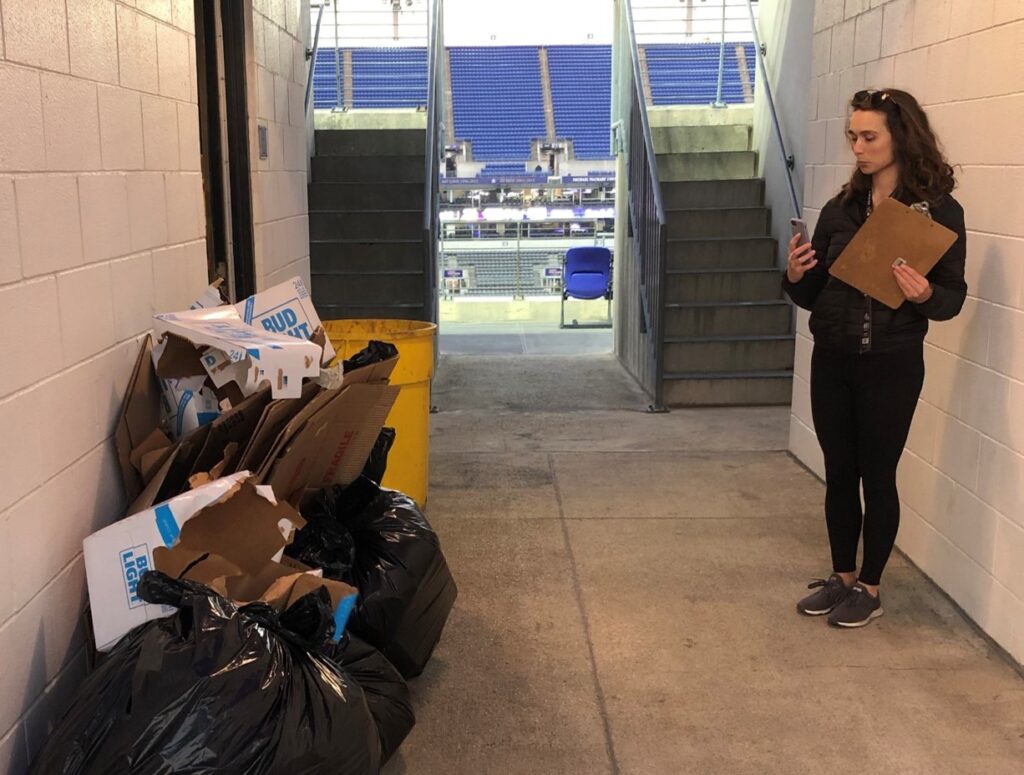
Need
After completing a LEED waste audit, a stadium needed help monitoring waste flow during games to determine the effectiveness of their new waste management plan, identify opportunities for improvement, and ensure compliance and training with staff was maintained.
Process
Our team conducts auditing rounds and training at several games per season. During rounds, visual waste audits of containers throughout the front-of-house and back-of-house areas are completed along with several hand sorted and weighed audits throughout the game of priority areas.
Results
Changes and issues are addressed in real time during the game to ensure adequate flow and separation of materials. Training is conducted with seasonal and day staff to maintain awareness of guidelines. Reports are created after each season and used to update an action plan with improvement projects. The stadium achieved a 41% diversion rate in 2021.
Waste Audit Companies
We are a waste audit company who offers comprehensive waste audit services. Contact or call us at 410-877-1593 and see how we can help with a waste audit.

Our team of sustainability and waste consultants work together to develop content for our site. Contact us to learn more about something we’ve written about or would like us to focus on in the future.

